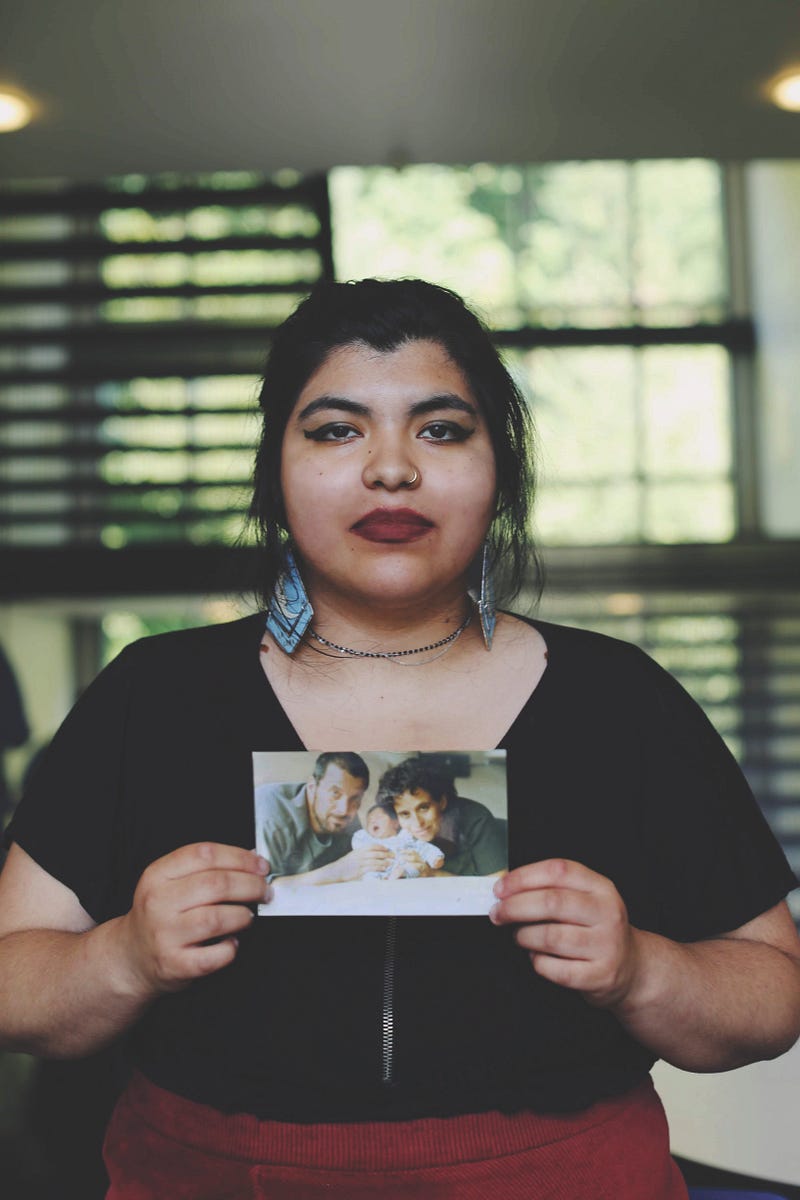NO VALIDATION NECESSARY:
Transcending the challenges of being adopted, and maintaining dignity with an intersectional identity
Written by Isa Kaufman-Geballe

I was ten, window shopping with my mom, when a woman came up to me and helped me try something on. She was Latina, like me. With a friendly smile, she asked my mom if she could pull me aside for a minute, before I had the chance to tell her I could not speak Spanish fluently.
“You see that white girl in the corner?” she said, referring to a blonde woman close by. “She’s got nothing on you.”
The woman told me to never forget who I was and where I came from, that I had more to say about myself than most people, and to be proud of my heritage, even if people were to question it.
I was reaffirmed that I did have a place in my heritage. This was different from other experiences I would have when people would find out I was adopted.
My parents never had to tell me I was born in Mexico. It was written all over my walls decorated with lunas, alebrijes on my table and picture books of photos of the day I was born. Being adopted was something I was proud of. My birth country was a part of me as much as my parental upbringing.
I was born in 1996 in Tijuana, Mexico, in a clinic not too far away from the border. My parents flew all the way from Seattle to meet me. It’s not common to meet adoptees like myself. In the U.S., from 1999 to 2018, there was just about 200 adoptions of Mexican children under the age of one.
Weeks had passed since my parents received a call informing them that my pregnant mother, who was represented by a lawyer, was giving up their unborn daughter for adoption. My parents painted picture of what life was like before I crossed the border– their memory of an arid night in Tijuana, when I was handed to my crying mom in a hospital clinic.
But as I grew up, I discovered the baggage that came with being adopted. There was a stigma associated with international adoption. For many, my experience meant a contradiction, that my cultural identity transcended beyond where I was born, and who my biological parents were.
The sting of being asked who my ‘real’ parents are was hard enough, but what really hit me was the notion that the people my age would not relate to me.
My honey skin, dark eyes and indigenous features were obvious indicators that I contrasted with the visibly white Seattle community I grew up in. At the same time, when I spoke only English or mentioned my Jewish upbringing, I felt distant from the Latinx community I yearned to be apart of.
“So, do you feel more Mexican or American?”
“Where are you really from?”
“Why are you so whitewashed?”
Those are all recurring questions people would ask me when they learned about my identity.
I felt ambivalent about the whole thing. There wasn’t a guidebook on how to answer these questions, or determine them as microaggressions. These small comments painted a bigger picture of not belonging that caused me to freeze up. They found out.
In these moments, I imagined shedding the layers of identity that came with the burden of hiding many different aspects of myself. I was my own brand of person, just like anyone else, but people didn’t have a box to put me in.
And so I began avoiding the subject all together, as if I had something to hide. I’d ask myself, “How could one person be at the margins of so many cultural backgrounds?”
When I moved away from home in Seattle to attend Western, I felt devastated that I would have to explain myself all over again to people I didn’t know and those with less exposure to people of color. After all, my new university and the city that surrounded it was made up of mostly white people.
I was cautious in my interactions with the few Latinx friends I made because I was scared that they would not relate to my complicated experience. I wanted to tell them how I had a Bat Mitzvah and a Quinceañera.
College changed things for me. Living away from my parents and meeting people, I realized I don’t share the same experiences, but in that experience, of feeling alone, I am just like everyone else. Many others have intersectionalities they struggle with.
Instead of succumbing to that familiar feeling of paralyzation that I felt when my identity was in question, I chose to embrace it, and share my beautiful intersections with my friends, regardless of their background. Looking at my identity in this light, I felt comfortable with who I was, and from what I could see, my friends responded to my vulnerability happily. I had hope that I would run into a handful of people like the woman from the clothing store.
I will constantly be questioned about my place, but I have come to learn that I am not the perceived feelings and judgments of other people.
“You are like a bridge, Isa,” my friend Citlaly would say. She said I had a power to connect people, despite their differences.